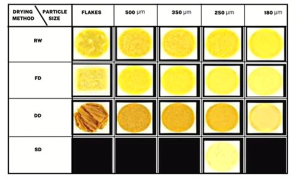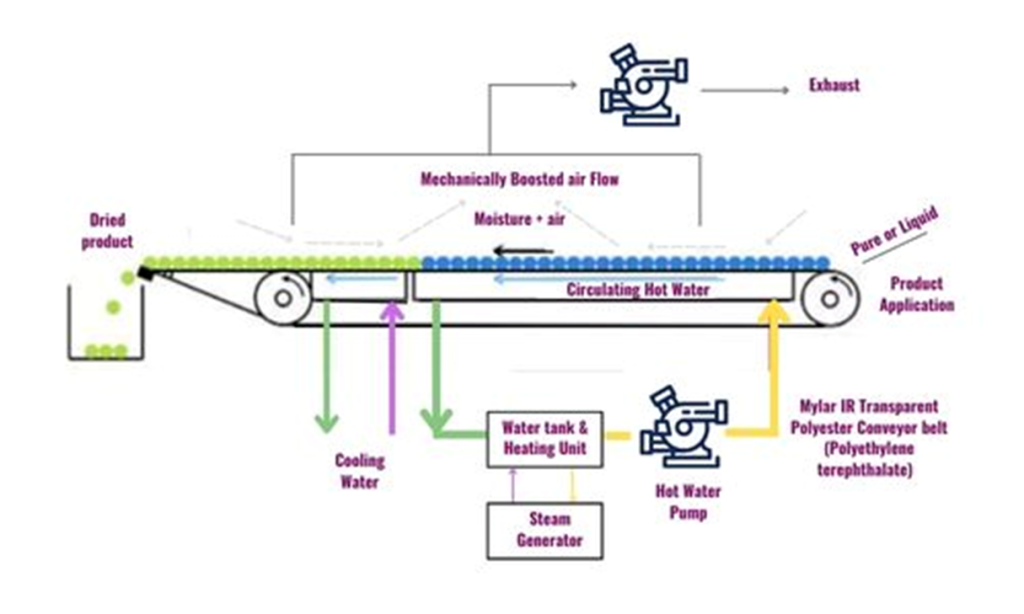INTRODUCTION
- A novel drying method for producing high-quality powders, flakes or sheets from fruits, vegetables or herbs concentrate in an efficient time and energy.
- MCD technologies ( Tacoma, Washington) designed the Refractance window dryer, patented by Richard Magoon in 1989.
- Sun drying and hot air drying cause significant loss of colour, making the product less appealing to consumers and resulting in loss of nutrient content and rehydration ability.
- Drum drying, developed for liquid products, causes severe quality loss in the product due to exposure to high temperatures (120-170°C) [1].
- Spray-dried products often suffer from high volatile losses due to atomization and high air temperature of 150-300°C (although the temperature of most particles may remain at the wet bulb temperature of the air), as well as significant nutrient losses [2].
- Freeze drying is a commercial process that can produce high-quality dehydrated products with good retention of shape, flavour, colour, nutrient content, and rehydration ability. However, the cost of producing freeze-dried products is very high, up to ten times the cost of using forced hot air drying.
- Refractance window drying helps address the problems that occur with other drying methods.
- The process uses 50 – 70% less cost and more than 50% less energy than freeze-drying [3].
COMPARISON WITH OTHER TECHNIQUES:

Figure 2: Mango powder at different particle slices obtained from different drying methods[5]
ADVANTAGES
- Lower installation and operation costs
- Shorter drying times
- Reduced Nutrient loss(Vitamins, Carotenoids, Antioxidants, Ascorbic acid)
- Reduced Microbial activity (E.coli, Innocula microbial activities)
- Increased shelf life
- No cross-contamination occurs.
- Refractance window drying requires less capital and 50% less energy than the freeze drier.
- A significant reduction of microbial load can be observed with refractance window heating.
- The dried food products had better quality with RW drying than other methods. [2].
CONCLUSION
- The refractance window drying method uses low temperatures, at less time and provides better colour, flavour, nutritional and textural properties in fruit leather production [4].
- Concerning microbial reduction ability, Refractance Window achieved at least reductions for total aerobic counts, coliforms, E. coli, and L. innocua microbial activities [2].
- The studies conducted on the Refractance Window drying technology show that the system demonstrates high retention of product quality (colour, vitamins, and antioxidants) when compared with other conventional drying methods.
- These attributes of RW drying make it suitable for processing of high-value foods, nutraceuticals, and food supplements where high standards of quality and safety are required. Additionally, RW drying technology can be used in parts of the world where effective drying methods such as freeze drying have been challenging to implement due to their high cost [1].

 Figure 1: Schematic view design of RW
Figure 1: Schematic view design of RW 



